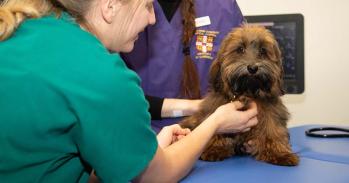
New research into the way in which we learn new skills finds that a single skill can be learned faster if its follow-through motion is consistent, but multiple skills can be learned simultaneously if the follow-through motion is varied.
New research into the way in which we learn new skills finds that a single skill can be learned faster if its follow-through motion is consistent, but multiple skills can be learned simultaneously if the follow-through motion is varied.
Every movement we make is slightly different from the last one even if we try really hard to make it exactly the same
David Franklin
Researchers from the University of Cambridge and Plymouth University have shown that follow-through – such as when swinging a golf club or tennis racket – can help us to learn two different skills at once, or to learn a single skill faster. The research provides new insight into the way tasks are learned, and could have implications for rehabilitation, such as re-learning motor skills following a stroke.
The researchers found that the particular motor memory which is active and modifiable in the brain at any given time depends on both lead-in and follow-through movement, and that skills which may otherwise interfere can be learned at the same time if their follow-through motions are unique. The research is published today (8 January) in the journal Current Biology.
While follow-through in sports such as tennis or golf cannot affect the movement of the ball after it has been hit, it does serve two important purposes: it both helps maximise velocity or force at the point of impact, and helps prevent injuries by allowing a gradual slowdown of a movement.
Now, researchers have found a third important role for follow-through: it allows distinct motor memories to be learned. In other words, by practising the same action with different follow-throughs, different motor memories can be learned for a single movement.
If a new task, whether that is serving a tennis ball or learning a passage on a musical instrument, is repeated enough times, a motor memory of that task is developed. The brain is able to store, protect and reactivate this memory, quickly instructing the muscles to perform the task so that it can be performed seemingly without thinking.
The problem with learning similar but distinct tasks is that they can ‘interfere’ with each other in the brain. For example, tennis and racquetball are both racket sports. However, the strokes for the two sports are slightly different, as topspin is great for a tennis player, but not for a racquetball player. Despite this, in theory it should be possible to learn both sports independently. However, many people find it difficult to perform at a high level in both sports, due to interference between the two strokes.
In order to determine whether we learn a separate motor memory for each task, or a single motor memory for both, the researchers examined either the presence or absence of interference by having participants learn a ‘reaching’ task in the presence of two opposite force-fields.
Participants grasped the handle of a robotic interface and made a reaching movement through an opposing force-field to a central target, followed immediately by a second unopposed follow-through movement to one of two possible final targets. The direction of the force-field was changed, representing different tasks, and the researchers were able to examine whether the tasks are learned separately, in which case there would be no interference, or whether we learn the mean of the two opposing force-fields, in which case there would be complete interference.
The researchers found that the specific motor memory which is active at any given moment depends on the movement that will be made in the near future. When a follow-through movement was made that anticipated the force-field direction, there was a substantial reduction in interference. This suggests that different follow-throughs may activate distinct motor memories, allowing us to learn two different skills without them interfering, even when the rest of the movement is identical. However, while practising a variable follow-through can activate multiple motor memories, practising a consistent follow-through allowed for tasks to be learned much faster.
“There is always noise in our movements, which arrives in the sensory information we receive, the planning we undertake, and the output of our motor system,” said Dr David Franklin of Cambridge’s Department of Engineering, a senior author on the research. “Because of this, every movement we make is slightly different from the last one even if we try really hard to make it exactly the same - there will always be variability within our movements and therefore within our follow-through as well.”
When practicing a new skill such as a tennis stroke, we may think that we do not need to care as much about controlling the variability after we hit the ball as it can’t actually affect the movement of the ball itself. “However this research suggests that this variability has another very important point - that it reduces the speed of learning of the skill that is being practiced,” said Franklin.
The research may also have implications for rehabilitation, such as re-learning skills after a stroke. When trying to re-learn skills after a stroke, many patients actually exhibit a great deal of variability in their movements. “Since we have shown that learning occurs faster with consistent movements, it may therefore be important to consider methods to reduce this variability in order to improve the speed of rehabilitation,” said Dr Ian Howard of Plymouth University, the paper’s lead author.
The work was supported by the Wellcome Trust, Human Frontier Science Program, Plymouth University and the Royal Society.
The text in this work is licensed under a Creative Commons Licence. If you use this content on your site please link back to this page. For image rights, please see the credits associated with each individual image.





